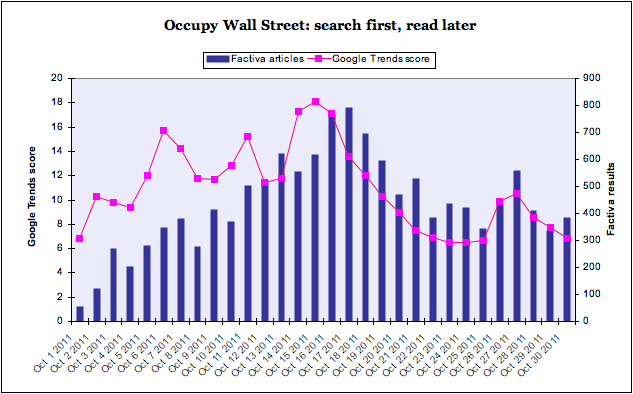There is so much going on with Twitter right now, that there’s no point in trying to summarise. Aside from to say – this is the early stages of the Musk takeover, November 4 2022.
If you want to think critically about Twitter, here are a few pointers.
Twitter punches way above its weight.
The thing about Twitter was never the numbers, but the quality of contributors. You have academics, agencies, politicians, policymakers, journalists, engineers, soldiers, thinkers, all mixing it up. That’s amazing.
But Twitter’s numbers were never that great, whether overall users, revenue, market cap. That was a problem for Twitter as a business. But as a utility, a service, Twitter was everything. Twitter was where the world broke news. This is and was its value. Facebook might have 2.whatever billion users, but had negligible impact in news-making.
Why? Let’s break it down into Content, Tech, Verification (blue ticks), and Advertisers.
CONTENT
One reason is journalists and the media. If Twitter has succeeded in anything, it’s harnessing the mainstream media (MSM). MSM might be ‘bad’, but actually, the MSM is how most people access the news, on whatever platform, even if it’s packaged as social. Social media’s greatest ‘trick’ was to convince the world that the MSM didn’t matter, when in fact, it amplified it, and gave it a bigger voice. I don’t watch GBNews, as I’m not interested in right-wing shitposts dressed up as news. But I’ve seen it on Twitter. Equally, I never tune in to GMB, or Jeremy Vine, but I’ve watched clips loads of times, when people like Owen Jones or Femi are debating some idiot like Ann Widdicombe about immigration or Brexit. It pops up on Twitter.
It’s not linear broadcasting, or traditional MSM. But most articles you see shared, most clips laughed about, are MSM. And if they aren’t, they get verified and amplified by the MSM, who repost them, so around it goes.
But the content isn’t just shared on Twitter – it IS Twitter. People like Trump, Musk, and others who are newsworthy in whatever they say, and say a lot, and say it on Twitter. Obviously, Trump’s gone, but his legacy is that saying X on Twitter, if you are important enough, IS a story. Not part of a story, evidence of X eleswhere, but X itself.
TECH
Rarely mentioned, but really important, is the ease of embedding. Almost all news websites embed tweets as source material. It’s part of the appeal. You can pad out your content easily with a few tweets, as well as doing serious journalism. Other social platforms are far harder in this regard – Facebook makes it very cumbersome. It’s also a function of aspect ratios.
What, you might ask? Well, embed an Insta story, TikTok post, snap or whatever, and it’s designed vertically. If you are embedding into a CMS, that’s annoying – it pushes down your content, tries to fill up the width, and generally looks too big. Tweets, on the other hand, are horizontal. That’s useful – they fit more neatly into the CMS, don’t clutter up, and their design is pretty minimal. Overall, a tweet in a story doesn’t screw up your page load or get in the way of ads. It’s a win-win.
VERIFICATION
Let me talk about ME for a minute. I have a blue tick. It took me a long time to get one. I have applied I think 3 or 4 times in my life. When I was at the FT, I was refused a blue tick as I didn’t use my FT address for Twitter – I preferred by personal address. As an author, I was refused one as I wasn’t part of an ‘organisation’ that Twitter recognised. As a freelance editor, I hadn’t accumulated enough bylined pieces – no name, no cigar. At Newsweek, I have accumulated bylines and – it seems crucially – an author page, so that worked. Boom, blue tick. Do I deserve one? I think so, I’m a sensible person with a public profile who has done some decent work in journalism and publishing over my career. Will I pay $8? Fuck off. I wouldn’t pay $1, once, for a blue tick forever.
The whole blue tick issue has become very toxic. Yes, you can argue it’s feudal. Or managed badly. But the thing Musk gets wrong, so utterly, totally wrong, is that it’s a reputational mark, and by definition you CAN’T BUY REPUTATION. You can improve the criteria, but reputation is nothing if you can pay for it. To make a blue tick (or white tick on blue badge, whatever) an $8 fee, makes the whole idea redundant.
So blue ticks were a good system. Not perfect, but good. They made people aspire to be credible. That’s useful on a platform where anyone can jump in to the debate. It helped Twitter stand out, create authority, which fed back into the small-but-important user base.
ADVERTISERS
Twitter gets revenue from ads. Any ad business is inherently tricky, for two reasons.
1) Ad revenue is pretty much a zero sum game, because ad spend is not exponential. Otherwise, Google wouldn’t have killed newspapers. Everyone is chasing the same ad dollar.
2) While everyone talks about network effects for users, which is how Facebook got to 2.x billion and MySpace didn’t etc, advertisers don’t give a damn. They aren’t locked in to Twitter any more than you are locked in to buying a brand of coffee. Switching is relatively easy. So if Musk allows free-wheeling hate speech to run rampant on Twitter – and he’s just fired half the company, so there’s every chance it will – then advertisers will flee. Suddenly, $44bn looks like a lot of money for a slightly-more intellectual version of Parler or Truth Social.
Social media has had a virtuous circle with the ad business, up until around this year. The next new thing attracted a keen audience; advertisers chase audience, especially hard-to-reach demographics. Ad revenue means investment in product, which makes system more attractive to audience, and round we go.
That revenue is needed to monitor content, because dangerous content can harm: harm people, communities, the environment, democracy. As a libertarian businessman, Musk hate moderation. It’s a black hole, in his view. But it’s key to keep the ‘good’ audience, and advertisers, engaged and happy.
The opposite, vicious circle, is also true. Platforms get stale; audience declines; ad revenues fall, so investment and moderation decline; and the degregation means more people leave (or become dormant). Shares plummet.
Meta is now the 25th most valuable company in America. It’s tanking. There are lots of reasons, which I won’t go in to, but the very fact it’s now below Pepsi is evidence to the fact that Big Tech isn’t a one-way bet. It’s an advertising vehicle, and people don’t like ads that much.
So what’s the answer?
There is no easy answer, in that Musk has control of Twitter, is clearly keen to change it in terms of less interference and more anything-goes; and I predict it will become a useless wasteland in less than a year. Advertisers will disappear, major voices will tire and find somewhere else.
The true value of Twitter was in authority. The fact that serious people used it. In that regard, it should have been protected like a utility, not left to the mercy of an eccentric firebrand billionaire with dubious politics and a penchant for spreading conspiracy theories.
If Twitter fails, what will the impact be?
One thing is that centrist/left voices will be potentially digitally homeless. Something should fill that void, something commercial. But it’s not the be-all.
More important is the public service element of Twitter. A digital, non-profit platform is needed for announcements, public broadcast, probably with no conversation around it, for people to follow as a service. Twitter is amazing in emergencies, for delivering news in the purest sense – not opinion, but up-to-the-minute facts. Where does that go without Twitter? We are left scrabbling around on a myriad of disparate websites.
And that’s where I’ll leave it.
I’m going to post this on Twitter, and then I may never post anything again. We’ll see.

 I don’t write to praise Jordan Peterson, nor to bury him. In fact, I don’t care about him at all. What I’m interested in is why everyone else is interested in him.
I don’t write to praise Jordan Peterson, nor to bury him. In fact, I don’t care about him at all. What I’m interested in is why everyone else is interested in him.



 The Sumo Matchup Centuries In The Making
The Sumo Matchup Centuries In The Making Premier League 2015-16 – the story of the season
Premier League 2015-16 – the story of the season A visual history of women’s tennis
A visual history of women’s tennis A Visual History of Which Countries Have Dominated the Summer Olympics
A Visual History of Which Countries Have Dominated the Summer Olympics



